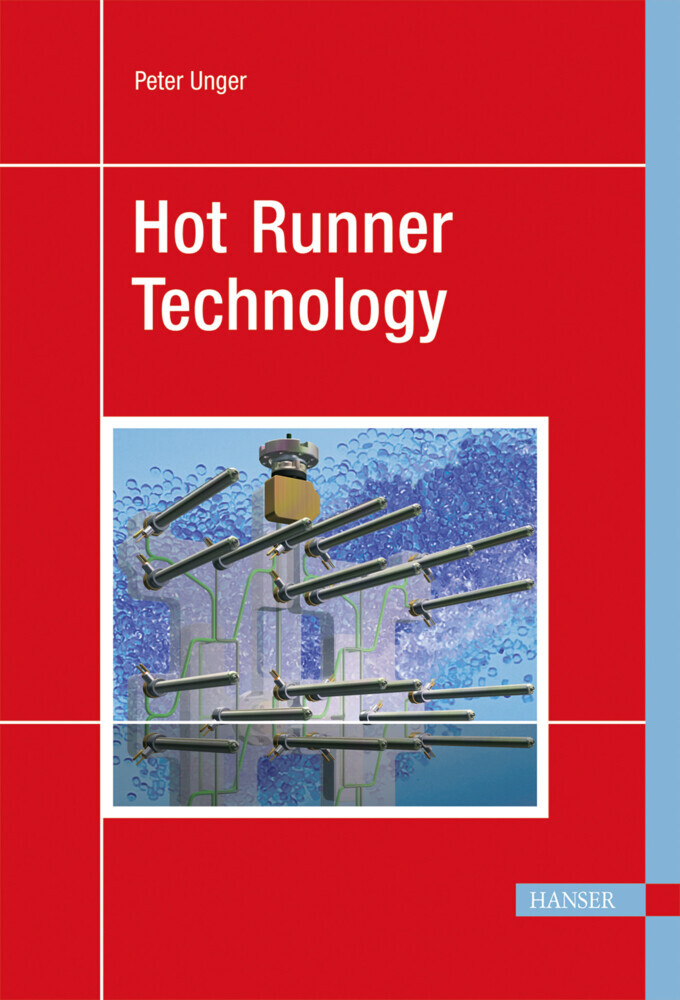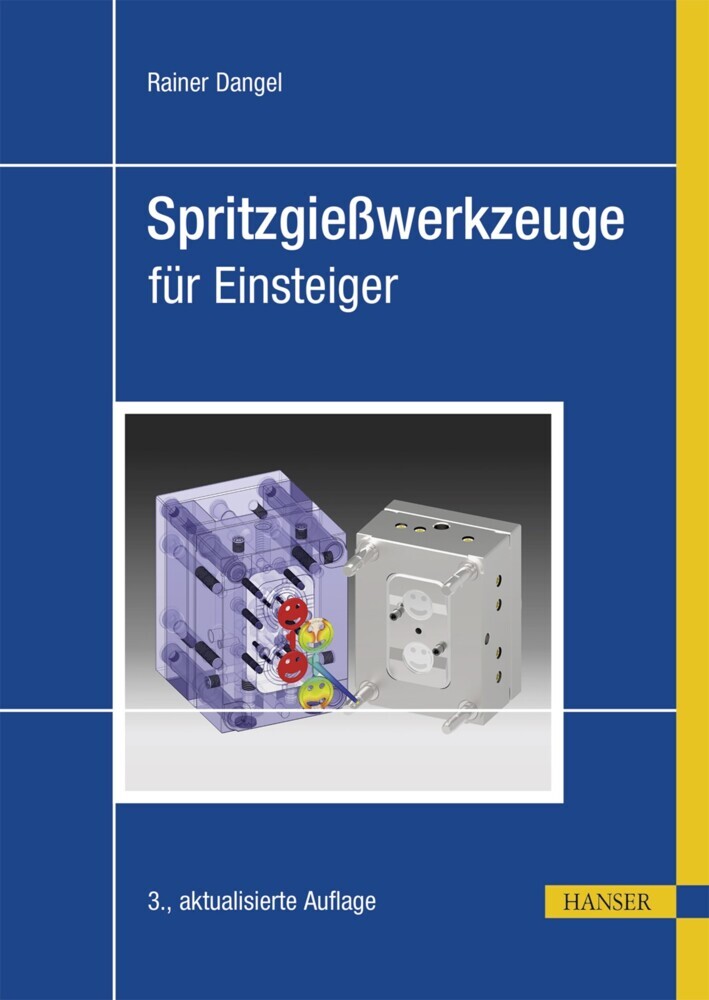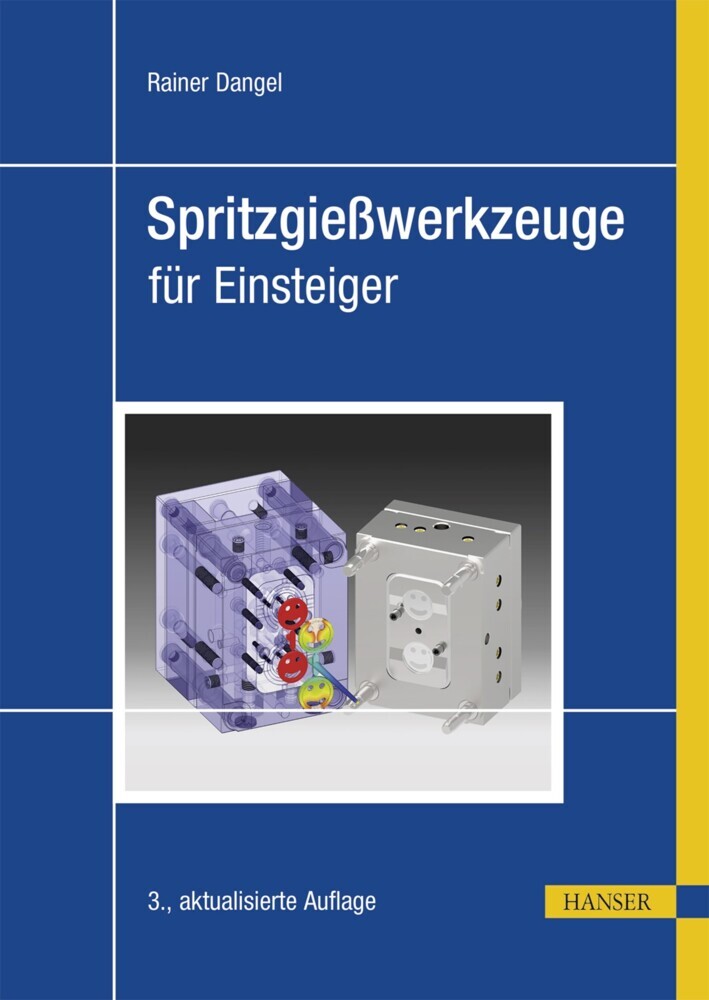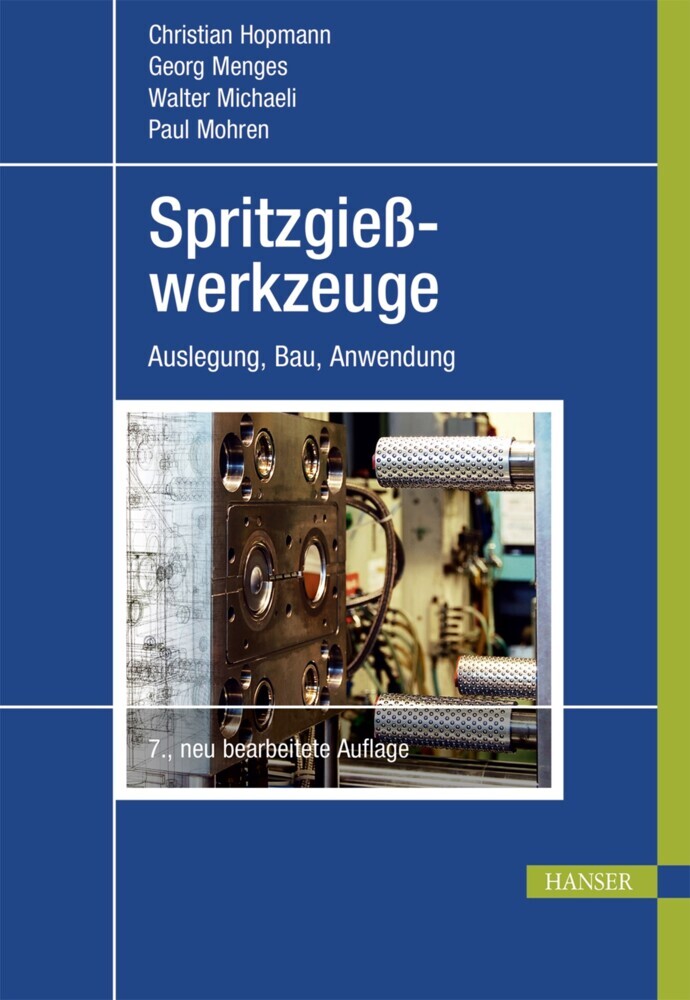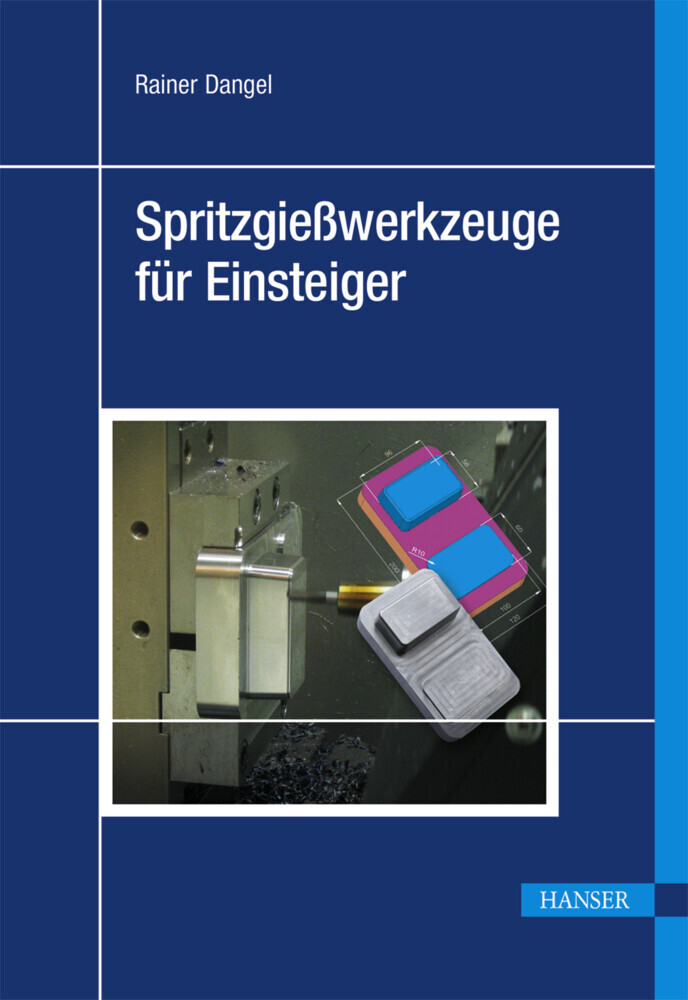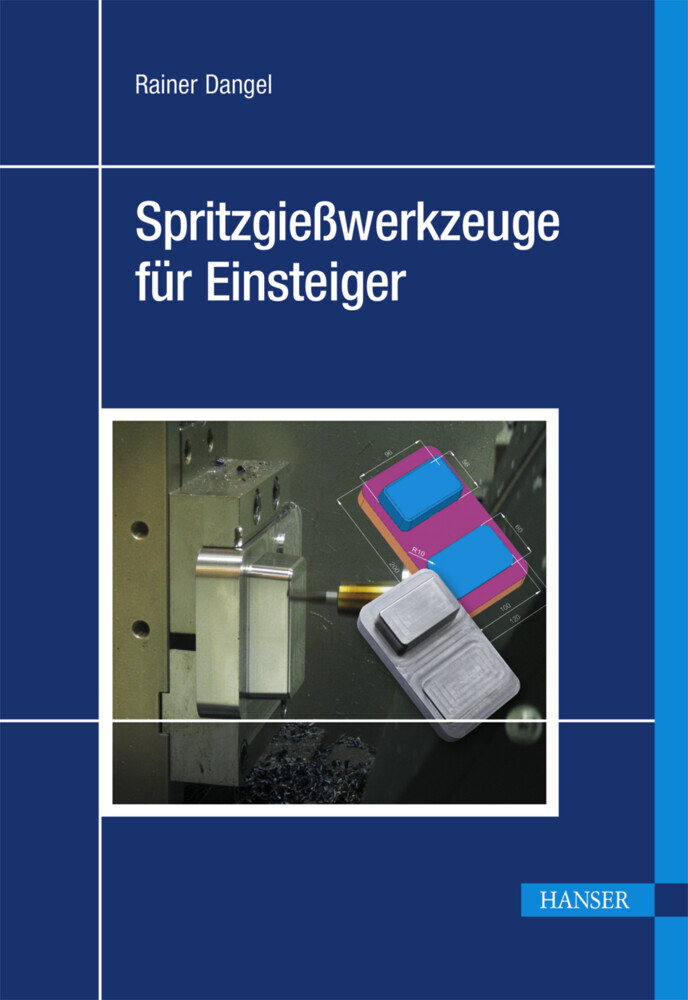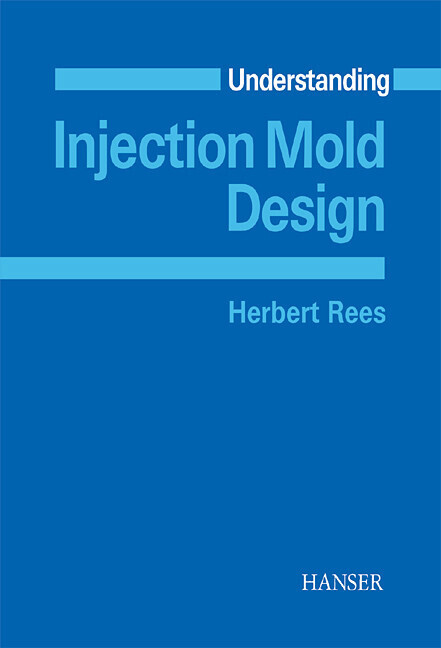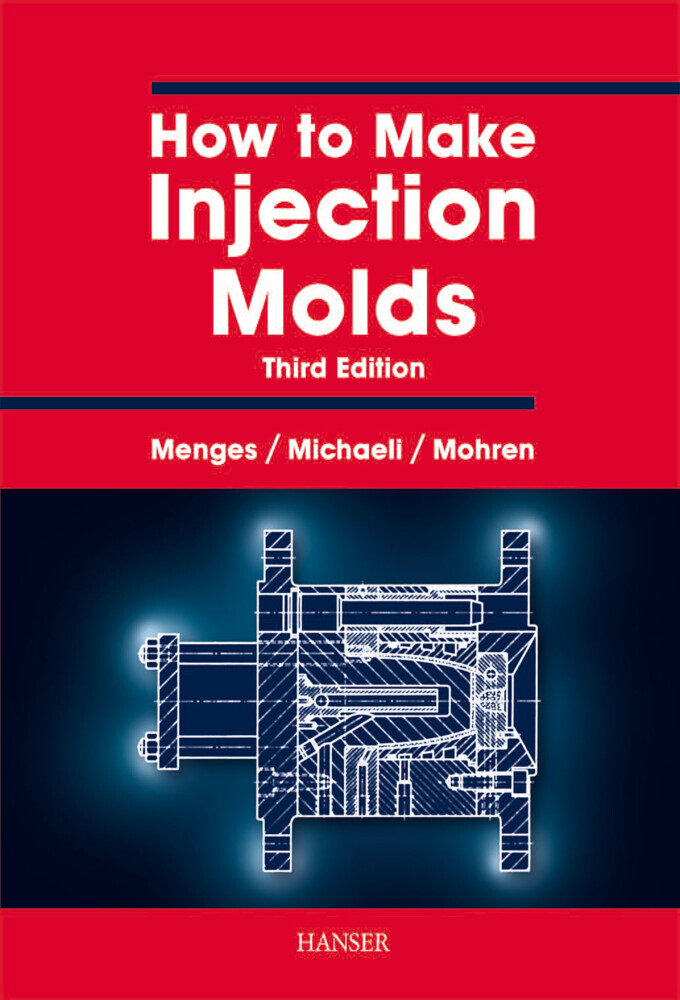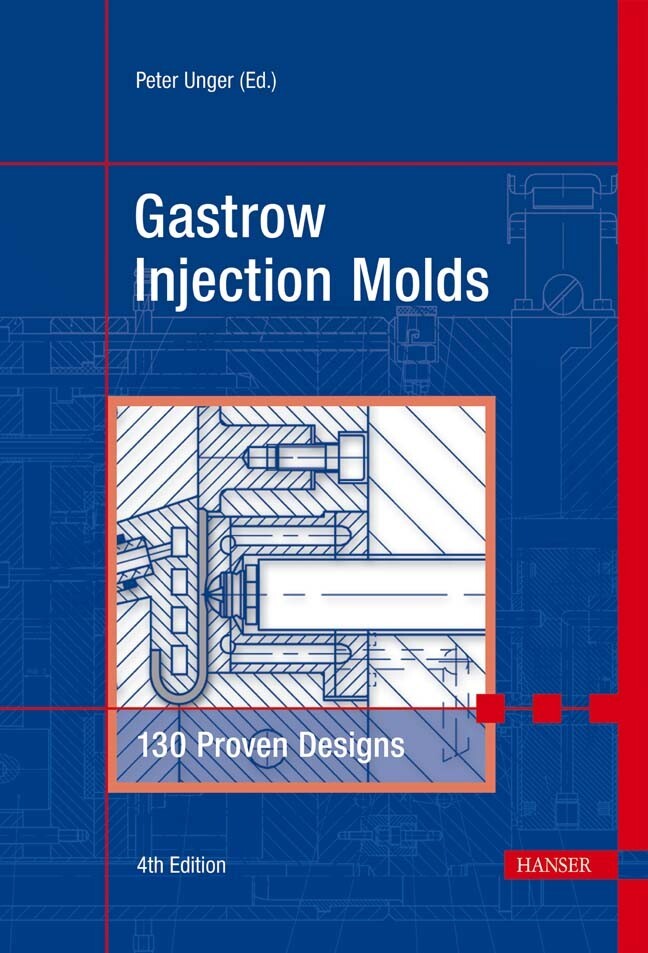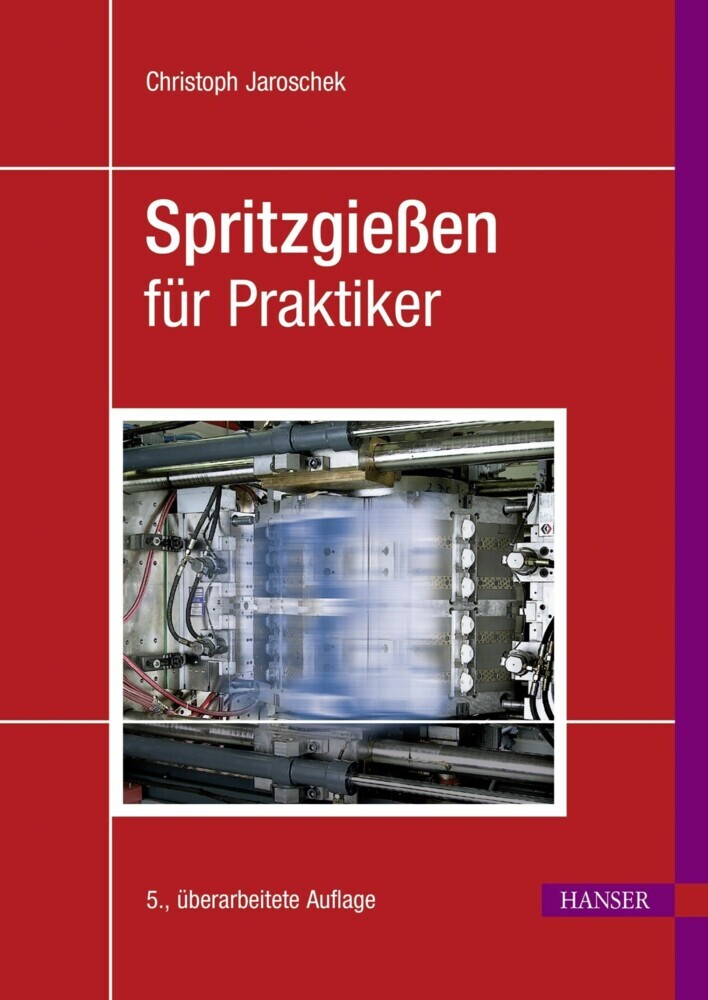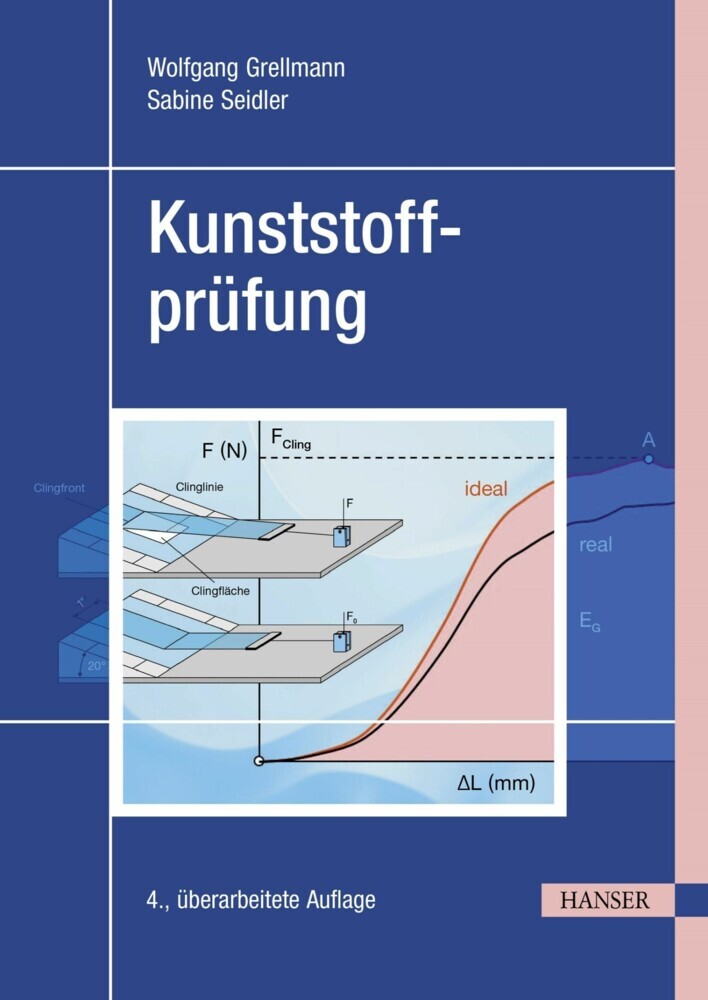Hot Runner Technology
Quality and profitability of injection molding operations can be considerably influenced by the hot runner system. The many variations and design principles of hot runners are material-dependent and therefore not universally applicable. Knowing about and recognizing these limitations will make or brake a molder's success.
This book provides a comprehensive overview of the state-of-the-art in hot runner technology, advantageous design principles, and applications. The user will find the necessary basics as well as many proven designs and application examples.
Contents:
- Basic Aspects of Heat Technology
- Introduction of Hot Runner Components
- Heating of Hot Runner Manifold Blocks
- Heating of Hot Runner Nozzles
- Temperature Measuring and -Controlling
- Material Behaviour under Mechanical Stress
- Corrosion and Wear
- Screw Connections and Material Selection for High Temperatures
- Basic Aspects of Plastics Technology
- Maintenance and Storage of Hot Runner Molds
- Design of Special Hot Runner Systems and Hot Runner Molds
- Supplier of Hot Runner Systems
1;Contents;6
This book provides a comprehensive overview of the state-of-the-art in hot runner technology, advantageous design principles, and applications. The user will find the necessary basics as well as many proven designs and application examples.
Contents:
- Basic Aspects of Heat Technology
- Introduction of Hot Runner Components
- Heating of Hot Runner Manifold Blocks
- Heating of Hot Runner Nozzles
- Temperature Measuring and -Controlling
- Material Behaviour under Mechanical Stress
- Corrosion and Wear
- Screw Connections and Material Selection for High Temperatures
- Basic Aspects of Plastics Technology
- Maintenance and Storage of Hot Runner Molds
- Design of Special Hot Runner Systems and Hot Runner Molds
- Supplier of Hot Runner Systems
1;Contents;62;Preface;103;1 Introduction;123.1;1.1 General Aspects of Hot Runner Technology;123.2;1.2 Design of Hot Runner Systems and Nomenclature of Components;173.3;1.3 Design of Single Components Used for Hot Runner Systems;183.4;References for Chapter 1;194;2 Basic Aspects of Heat Technology;204.1;2.1 Heat Transfer;214.1.1;2.1.1 Heat Conduction;214.1.2;2.1.2 Convection;274.1.3;2.1.3 Radiation;304.1.4;2.1.4 Summary;344.2;2.2 Amount of Heat, Heating Capacity;354.3;2.3 Heat Expansion;374.4;References for Chapter 2;475;3 Introduction of Hot Runner Components;485.1;3.1 Hot Runner Manifold Block;485.1.1;3.1.1 Externally Heated Hot Runner Manifold Blocks;525.1.2;3.1.2 Internally Heated Hot Runner Manifold Blocks;575.1.3;3.1.3 Insulated Runner System;605.1.4;3.1.4 Rheological Design;635.2;3.2 Reflector- and Thermal Insulating Sheets, Surface Coating;675.3;3.3 Melt Chamber Bushing;725.4;3.4 Distributor Bushing;745.5;3.5 Spacer Disks;775.6;3.6 Anti-Twist Device for Hot Runner Block;895.7;3.7 Turn Plugs;905.8;3.8 Hot Runner Nozzles;935.8.1;3.8.1 General Aspects;935.8.2;3.8.2 Open Hot Runner Nozzle;945.8.3;3.8.3 Open Multiple Gate Nozzles;1005.8.4;3.8.4 Shut-Off Nozzles;1185.9;References for Chapter 3;1546;4 Heating of Hot Runner Manifold Blocks;1586.1;4.1 Cylindrical Cartridge Heater;1596.2;4.2 Tapered Cartridge Heater;1616.3;4.3 Threaded Cartridge Heater;1626.4;4.4 Tubular Heater;1636.5;4.5 Heater Plate;1666.6;4.6 "Thick-Film"- Heating Element;1686.7;4.7 Indirect Heating Using a Liquid Medium;1696.8;4.8 Heat Pipe;1706.9;4.9 Determination of Heating Capacity of an Externally Heated Hot Runner Manifold Block;1716.9.1;4.9.1 Estimate of Required Heating Capacity;1716.9.2;4.9.2 Numerical Determination of Heating Capacity to be Installed for the Heat-up Phase;1726.10;References for Chapter 4;1757;5 Heating of Hot Runner Nozzles;1767.1;5.1 Cylindrical Cartridge Heater;1767.2;5.2 Coiled Heater;1777.3;5.3 Resistor Heater;1817.4;5.4 Heat Pipe;1847.5;5.5 Indirect Heating Using a Liquid Medium;1857.6;5.6 General Remarks Regarding Internal Heating ("Conductive Heating");1887.7;5.7 Indirect Heating;1927.7.1;5.7.1 Thermally Conductive Torpedoes;1927.7.2;5.7.2 Thermally Conductive Nozzle;1977.8;References for Chapter 5;2038;6 Measurement and Control of Temperature;2049;7 Material Behavior under Mechanical Load;2069.1;7.1 Notch Effect under Static Load;2069.2;7.2 Notch Effect under Dynamic Load;2099.3;References for Chapter 7;21110;8 Corrosion and Wear;21210.1;References for Chapter 8;21611;9 Screw Connections and Material Selection for Elevated Temperatures;21811.1;References for Chapter 9;22112;10 Basic Aspects of Plastics Technology;22212.1;10.1 Flow Characteristics, Viscosity, Pressure Loss;22212.2;10.2 Thermal Stability;22612.3;10.3 Decrease of Molecular Weight (Exemplified by PBT);22812.3.1;10.3.1 Thermal Degradation;22812.3.2;10.3.2 Mechanical Degradation;23012.3.3;10.3.3 Oxidative Degradation;23012.3.4;10.3.4 Hydrolytic Degradation;23112.4;References for Chapter 10;23113;11 Maintenance and Storage of Hot Runner Molds;23213.1;References for Chapter 11;23314;12 Design of Special Hot Runner Systems and Hot Runner Molds;23414.1;12.1 300-Fold Hot Runner System for the Production of Transistor Housings Made of Reinforced PBT;23414.2;12.2 Hot Runner Manifold Block for Sandwich Molding;23714.3;12.3 Hot Runner System with Balanced Filling Action;23914.4;12.4 Hot Runner Nozzles for Small Center-to-Center Cavity Space;24014.5;References for Chapter 12;24215;Appendix 1: Abbreviations Used in this Book;24416;Appendix 2: Conversion Factors for Units of Measure;24617;Index;250
1;Contents;6
2;Preface;10
3;1 Introduction;12
3.1;1.1 General Aspects of Hot Runner Technology;12
3.2;1.2 Design of Hot Runner Systems and Nomenclature of Components;17
3.3;1.3 Design of Single Components Used for Hot Runner Systems;18
3.4;References for Chapter 1;19
4;2 Basic Aspects of Heat Technology;20
4.1;2.1 Heat Transfer;21
4.1.1;2.1.1 Heat Conduction;21
4.1.2;2.1.2 Convection;27
4.1.3;2.1.3 Radiation;30
4.1.4;2.1.4 Summary;34
4.2;2.2 Amount of Heat, Heating Capacity;35
4.3;2.3 Heat Expansion;37
4.4;References for Chapter 2;47
5;3 Introduction of Hot Runner Components;48
5.1;3.1 Hot Runner Manifold Block;48
5.1.1;3.1.1 Externally Heated Hot Runner Manifold Blocks;52
5.1.2;3.1.2 Internally Heated Hot Runner Manifold Blocks;57
5.1.3;3.1.3 Insulated Runner System;60
5.1.4;3.1.4 Rheological Design;63
5.2;3.2 Reflector- and Thermal Insulating Sheets, Surface Coating;67
5.3;3.3 Melt Chamber Bushing;72
5.4;3.4 Distributor Bushing;74
5.5;3.5 Spacer Disks;77
5.6;3.6 Anti-Twist Device for Hot Runner Block;89
5.7;3.7 Turn Plugs;90
5.8;3.8 Hot Runner Nozzles;93
5.8.1;3.8.1 General Aspects;93
5.8.2;3.8.2 Open Hot Runner Nozzle;94
5.8.3;3.8.3 Open Multiple Gate Nozzles;100
5.8.4;3.8.4 Shut-Off Nozzles;118
5.9;References for Chapter 3;154
6;4 Heating of Hot Runner Manifold Blocks;158
6.1;4.1 Cylindrical Cartridge Heater;159
6.2;4.2 Tapered Cartridge Heater;161
6.3;4.3 Threaded Cartridge Heater;162
6.4;4.4 Tubular Heater;163
6.5;4.5 Heater Plate;166
6.6;4.6 Thick-Film - Heating Element;168
6.7;4.7 Indirect Heating Using a Liquid Medium;169
6.8;4.8 Heat Pipe;170
6.9;4.9 Determination of Heating Capacity of an Externally Heated Hot Runner Manifold Block;171
6.9.1;4.9.1 Estimate of Required Heating Capacity;171
6.9.2;4.9.2 Numerical Determination of Heating Capacity to be Installed for the Heat-up Phase;172
6.10;References for Chapter 4;175
7;5 Heating of Hot Runner Nozzles;176
7.1;5.1 Cylindrical Cartridge Heater;176
7.2;5.2 Coiled Heater;177
7.3;5.3 Resistor Heater;181
7.4;5.4 Heat Pipe;184
7.5;5.5 Indirect Heating Using a Liquid Medium;185
7.6;5.6 General Remarks Regarding Internal Heating ( Conductive Heating );188
7.7;5.7 Indirect Heating;192
7.7.1;5.7.1 Thermally Conductive Torpedoes;192
7.7.2;5.7.2 Thermally Conductive Nozzle;197
7.8;References for Chapter 5;203
8;6 Measurement and Control of Temperature;204
9;7 Material Behavior under Mechanical Load;206
9.1;7.1 Notch Effect under Static Load;206
9.2;7.2 Notch Effect under Dynamic Load;209
9.3;References for Chapter 7;211
10;8 Corrosion and Wear;212
10.1;References for Chapter 8;216
11;9 Screw Connections and Material Selection for Elevated Temperatures;218
11.1;References for Chapter 9;221
12;10 Basic Aspects of Plastics Technology;222
12.1;10.1 Flow Characteristics, Viscosity, Pressure Loss;222
12.2;10.2 Thermal Stability;226
12.3;10.3 Decrease of Molecular Weight (Exemplified by PBT);228
12.3.1;10.3.1 Thermal Degradation;228
12.3.2;10.3.2 Mechanical Degradation;230
12.3.3;10.3.3 Oxidative Degradation;230
12.3.4;10.3.4 Hydrolytic Degradation;231
12.4;References for Chapter 10;231
13;11 Maintenance and Storage of Hot Runner Molds;232
13.1;References for Chapter 11;233
14;12 Design of Special Hot Runner Systems and Hot Runner Molds;234
14.1;12.1 300-Fold Hot Runner System for the Production of Transistor Housings Made of Reinforced PBT;234
14.2;12.2 Hot Runner Manifold Block for Sandwich Molding;237
14.3;12.3 Hot Runner System with Balanced Filling Action;239
14.4;12.4 Hot Runner Nozzles for Small Center-to-Center Cavity Space;240
14.5;References for Chapter 12;242
15;Appendix 1: Abbreviations Used in this Book;244
16;Appendix 2: Conversion Factors for Units of Measure;246
17;Index;250
Unger, Peter
| ISBN | 9783446430631 |
|---|---|
| Artikelnummer | 9783446430631 |
| Medientyp | E-Book - PDF |
| Copyrightjahr | 2006 |
| Verlag | Carl Hanser Verlag München |
| Umfang | 241 Seiten |
| Sprache | Englisch |
| Kopierschutz | Digitales Wasserzeichen |

